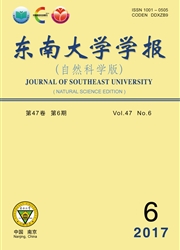

 中文摘要:
中文摘要:
为了研究不同数量、不同断面形式串列钝体的驰振气动干扰效应,以某大跨径悬索桥桥塔为例,采用CFD数值分析方法研究了双幅桥塔的4个塔柱在4种断面情况下的驰振气动干扰效应,并将其与单幅桥塔的2个塔柱在同样4种断面情况下的驰振气动干扰效应进行了比较分析.结果表明:当双塔柱矩形断面位于双塔柱倒直角断面桥塔上游或双塔柱倒外凸圆弧断面位于双塔柱倒直角断面下游时,可能发生驰振;对于单幅桥塔的2个塔柱,下游塔柱主要在0°风攻角附近发生驰振,且随着2个塔柱间间距的减小发生驰振的可能性增大;对于双幅桥塔的4个塔柱,由于气动干扰效应的存在,第4个塔柱不易发生驰振,在矩形断面和倒外凸圆弧断面情况下,第2,3个塔柱可能发生驰振失稳.
 英文摘要:
英文摘要:
In order to investigate the aerodynamic interference effects of galloping on bluff bodies in tandem configuration with different amounts and section shapes,taking the pylon of a long-span suspension bridge as an example,the aerodynamic interference effects of galloping of four columns of twin pylons with four kinds of section shapes were studied by using the numerical analysis method of the computational fluid dynamics(CFD),which were then compared with those of two columns of a single pylon with the same section shapes.The results show that galloping instabilities can occur when two pylons with rectangular section are in the upstream of those with reverse right angle section or two pylons with reverse outer convex arc section are in the downstream of those with reverse right angle section.For two columns of a single pylon,the galloping instabilities of the downriver column could occur near the wind attack angle of 0°.The closer the two columns are,the bigger the possibility of galloping is.For four columns of twin pylons,the galloping instability for the fourth column of pylon cannot occur because of the aerodynamic interference effect;but for the second and third column of pylon.With rectangular section and reverse outer convex arc section,the galloping instability can occur.
 同期刊论文项目
同期刊论文项目
 同项目期刊论文
同项目期刊论文
 期刊信息
期刊信息
